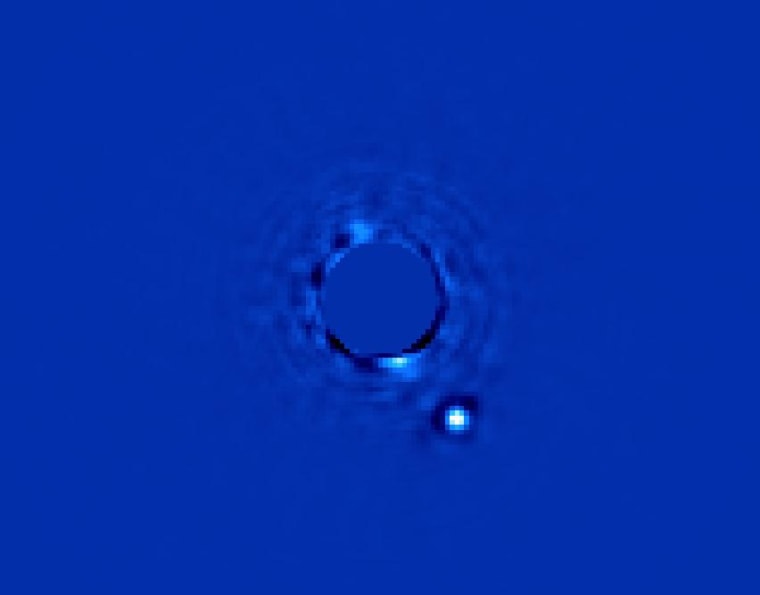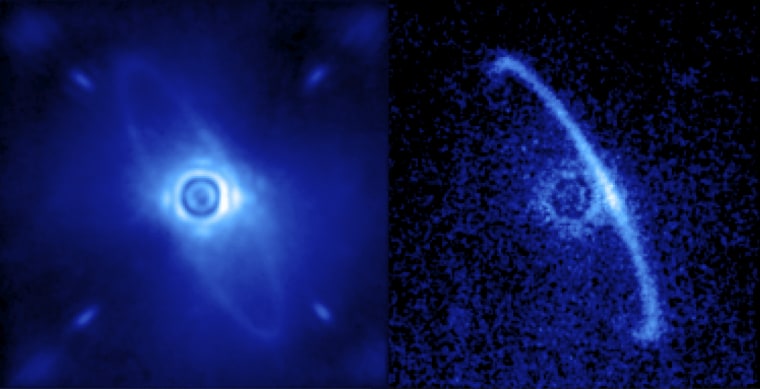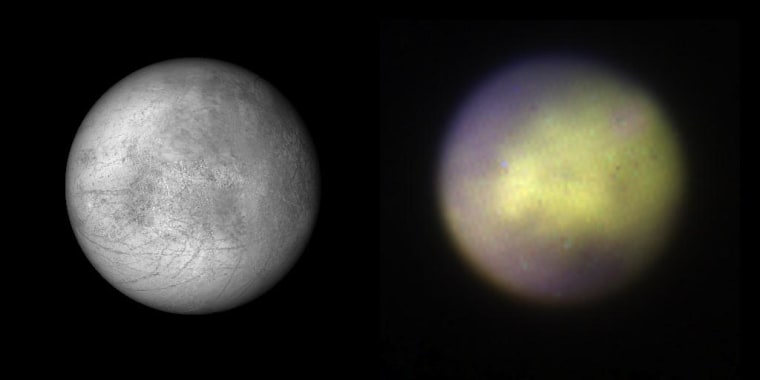
The first images from the world's most advanced instrument for seeing planets beyond our solar system show a pale blue dot around an alien star, a faraway dusty disk and a closer-in target: the surface of Europa, an icy moon of Jupiter.
The Gemini Planet Imager has been in operation since November at the 26-foot (8-meter) Gemini South telescope in Chile, but the "first light" images didn't go public until Tuesday's big reveal at the American Astronomical Society's meeting in Washington.
The infrared imaging system is designed to block out the glare from distant stars and pick up the heat glow from giant planets in wide orbits around those stars. It could help revolutionize the search for alien worlds.
“Most planets that we know about to date are only known because of indirect methods that tell us a planet is there, a bit about its orbit and mass, but not much else,” Bruce Macintosh, an astrophysicist at Lawrence Livermore National Laboratory who led the instrument development team, said in a news release. “With GPI we directly image planets around stars — it’s a bit like being able to dissect the system and really dive into the planet’s atmospheric makeup and characteristics."
GPI's first targets included Beta Pictoris b, a giant planet orbiting a star that's 63 light-years away; a thin dusty disk circling the star HR4796A; and a color-coded infrared view of Europa's surface.

Macintosh said even these first test images are almost 10 times better than those produced by other instruments of the same type. "In one minute, we are seeing planets that used to take us an hour to detect," he said.
More than 1,000 extrasolar planets have been detected to date, but most of them were found using indirect methods — including the transit method employed by NASA's Kepler telescope. This year, the GPI team will search for direct evidence of giant planets around 600 young stars.

